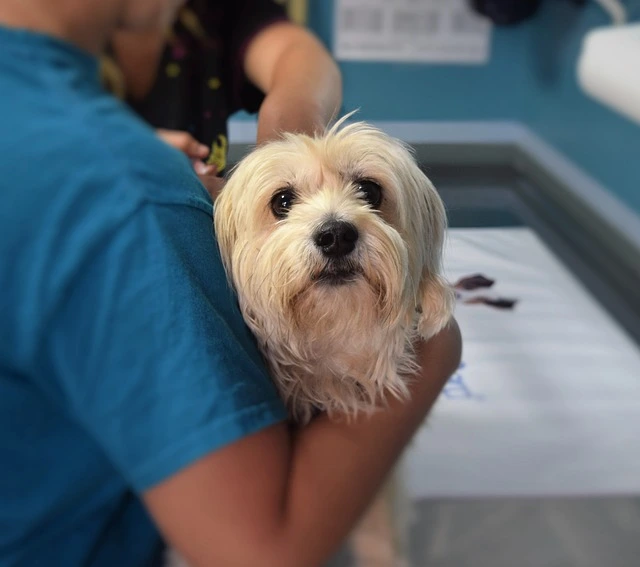As pet owners, our furry companions hold a special place in our hearts, becoming beloved members of our families. Ensuring the health and well-being of our pets is a top priority, akin to caring for any other family member. Just as we schedule regular check-ups with healthcare professionals to monitor our own health, it’s equally important to provide the same level of care and attention to our pets.
However, the logistics and expenses associated with frequent visits to the veterinarian can sometimes pose challenges. Amidst our busy lives, finding the time to schedule and attend these appointments can be daunting. Additionally, the costs incurred from multiple visits may become burdensome for pet owners.
In light of these challenges, the concept of performing a health check-up for pets at home has gained traction. This approach offers pet owners the opportunity to actively participate in monitoring their pet’s health, right from the comfort of their own homes. By learning to conduct basic health assessments and recognizing early warning signs, pet owners can play a proactive role in safeguarding their pet’s well-being.
This comprehensive guide aims to empower pet owners with the knowledge and skills necessary to perform thorough health check-ups for their pets at home. From preparing the necessary tools and creating a conducive environment to conducting physical examinations, oral assessments, and behavioral observations, each step is meticulously outlined to ensure a comprehensive evaluation.
By incorporating these practices into their routine, pet owners can establish a proactive approach to pet healthcare, fostering a deeper bond with their furry companions while promoting their long-term health and happiness. With dedication, attentiveness, and the guidance provided in this guide, pet owners can embark on a journey of proactive pet care, ensuring their beloved companions thrive for years to come.
Step 1: Preparation
Before starting your pet’s health check-up, it’s important to prepare adequately. Gather the necessary materials, such as a flashlight, disposable gloves, a pet thermometer, a towel, and any other tools that may be helpful during the examination.
Make sure to choose a quiet and comfortable location to perform the check-up. If your pet is prone to getting nervous during the examination, consider using relaxation techniques such as gentle stroking or offering treats to keep them calm and cooperative.
Once you have gathered all the necessary materials and prepared the environment, you will be ready to start your pet’s health check-up.
Step 2: Physical Examination
The next step in the at-home health check-up is to perform a thorough physical examination of your pet. Begin by examining your pet’s body, looking for any signs of wounds, lumps, or changes in the skin or fur. Check especially areas such as the armpits, groin, and ears, where skin problems and infections are more common.
As you examine your pet’s body, it’s also important to observe their behavior. Pay attention to their posture, if they seem to be moving freely or if they are limping in any way. Additionally, observe if there are any signs of discomfort or pain when touching specific areas of your pet’s body.
During the physical examination, it’s also a good idea to check your pet’s temperature. Use a digital thermometer for pets and gently insert it into your pet’s rectum. The normal temperature for a dog or cat ranges between 37.5°C to 39.2°C. If your pet’s temperature is outside of this range, it’s important to contact your veterinarian immediately.
Step 3: Oral Examination
Your pet’s oral health plays a crucial role in their overall well-being. Many health problems, such as heart and kidney diseases, can be related to poor oral health. Therefore, it’s important to include an oral examination in your at-home health check-up.
To perform the oral examination, start by observing your pet’s teeth and gums. Look for signs of plaque buildup, red or swollen gums, and any other signs of dental problems. It’s also important to check for bad breath, as this can indicate the presence of infections or other health issues.
In addition to examining the teeth and gums, it’s important to check for any wounds or injuries in your pet’s mouth. Pay attention to their lips, tongue, and palate, and be alert to any signs of pain or discomfort during the examination.
If you notice any abnormalities during your pet’s oral examination, it’s important to contact your veterinarian immediately for evaluation and proper treatment.
Step 4: Behavioral Observation
In addition to the physical and oral examination, it’s important to observe your pet’s behavior during the at-home health check-up. Pay attention to changes in appetite, energy levels, sleep patterns, and any other unusual behaviors that may indicate a health problem.
If your pet appears lethargic, restless, depressed, or behaves differently than usual, this may be a sign that something is wrong. Pay attention to these signs and be prepared to act quickly if necessary.
Conclusion:
Performing regular health check-ups on your pet can make all the difference in their quality of life. By being attentive to signs of health problems and acting quickly when needed, you can ensure that your pet lives a long, healthy, and happy life by your side. Remember that this guide provides only basic guidelines for performing a health check-up at home. If you have any concerns about your pet’s health or if you find anything concerning during the examination, it’s always best to seek guidance from a qualified veterinarian.
Now that you’ve learned how to perform a health check-up on your pet at home, take this opportunity to strengthen the bond with your furry friend and ensure their continued well-being. With proper care and attention, you can help your pet live a long and healthy life by your side.
Remember that your veterinarian is always the best source of guidance and medical care for your pet. If you have any questions or concerns about your pet’s health, don’t hesitate to reach out to your veterinarian for assistance.
Frequently Asked Questions:
- Why is it important to perform a health check-up at home for my pet? Performing a health check-up at home allows you to monitor your pet’s well-being regularly, enabling early detection of potential health issues and promoting proactive care.
- How often should I perform a health check-up on my pet? It’s recommended to perform a health check-up on your pet at least once a month, although more frequent checks may be necessary for senior pets or those with pre-existing health conditions.
- What are the signs that my pet may be sick? Signs that your pet may be sick include changes in appetite, energy levels, behavior, or appearance, as well as vomiting, diarrhea, coughing, sneezing, or difficulty breathing.
- How can I tell if my pet is in pain during the health check-up? Signs of pain in pets include vocalization, reluctance to move or be touched, changes in posture, panting, trembling, or aggression. Be gentle during the examination and observe your pet’s reactions closely.
- What should I do if I find something concerning during my pet’s health check-up? If you notice anything concerning during your pet’s health check-up, such as lumps, wounds, or abnormal behavior, consult your veterinarian for further evaluation and guidance.
- Can I use any thermometer to measure my pet’s temperature? It’s best to use a digital thermometer specifically designed for pets and follow the manufacturer’s instructions for proper use. Avoid using glass or mercury thermometers, as they can be unsafe and inaccurate.
- What are the signs of a dental infection in dogs and cats? Signs of dental infection in dogs and cats include bad breath, swollen or bleeding gums, loose or broken teeth, drooling, difficulty eating, pawing at the mouth, or reluctance to chew.
- How do I calm my pet during the at-home health examination? To calm your pet during the examination, speak to them in a soothing tone, offer treats or toys as distractions, and use gentle, reassuring touch. Keep the environment calm and quiet to minimize stress.
- Can I brush my pet’s teeth at home? Yes, you can brush your pet’s teeth at home using a pet-specific toothbrush and toothpaste. Introduce tooth brushing gradually, using positive reinforcement, and aim to brush your pet’s teeth daily for optimal dental health.
- When should I consult a veterinarian for my pet’s health concerns? Consult your veterinarian if you notice any concerning symptoms, changes in behavior, or abnormalities during your pet’s health check-up. Your veterinarian can provide guidance, diagnosis, and treatment options tailored to your pet’s needs.
- How can I monitor my pet’s weight at home? You can monitor your pet’s weight at home using a pet scale or by regularly weighing yourself while holding your pet and then subtracting your weight. Monitor changes in weight, as sudden weight loss or gain can indicate health issues.
- What vaccinations does my pet need, and how often? Your pet’s vaccination needs may vary based on factors such as species, age, lifestyle, and geographic location. Consult your veterinarian to develop a vaccination schedule tailored to your pet’s specific needs.
- How can I prevent parasites in my pet? Prevent parasites in your pet by using parasite preventatives recommended by your veterinarian, such as monthly flea and tick preventatives, heartworm preventatives, and regular deworming treatments.
- Is it necessary to groom my pet regularly? Yes, regular grooming is essential for maintaining your pet’s coat, skin, and overall health. Depending on your pet’s breed and coat type, grooming may include brushing, bathing, nail trimming, ear cleaning, and dental care.
- What should I include in my pet’s first aid kit? Your pet’s first aid kit should include essentials such as gauze pads, bandages, adhesive tape, antiseptic wipes, scissors, tweezers, a digital thermometer, and your veterinarian’s contact information. Customize the kit based on your pet’s specific needs.
- How can I prepare my pet for emergencies or natural disasters? Prepare your pet for emergencies or natural disasters by creating a pet emergency kit, including food, water, medications, medical records, identification, and comfort items. Develop a disaster plan and practice evacuation procedures with your pet regularly

Juan López, a pet enthusiast since youth, shares his expertise and love for animals on his blog. With practical tips and profound insights, he guides readers toward a happier life alongside their furry companions.




